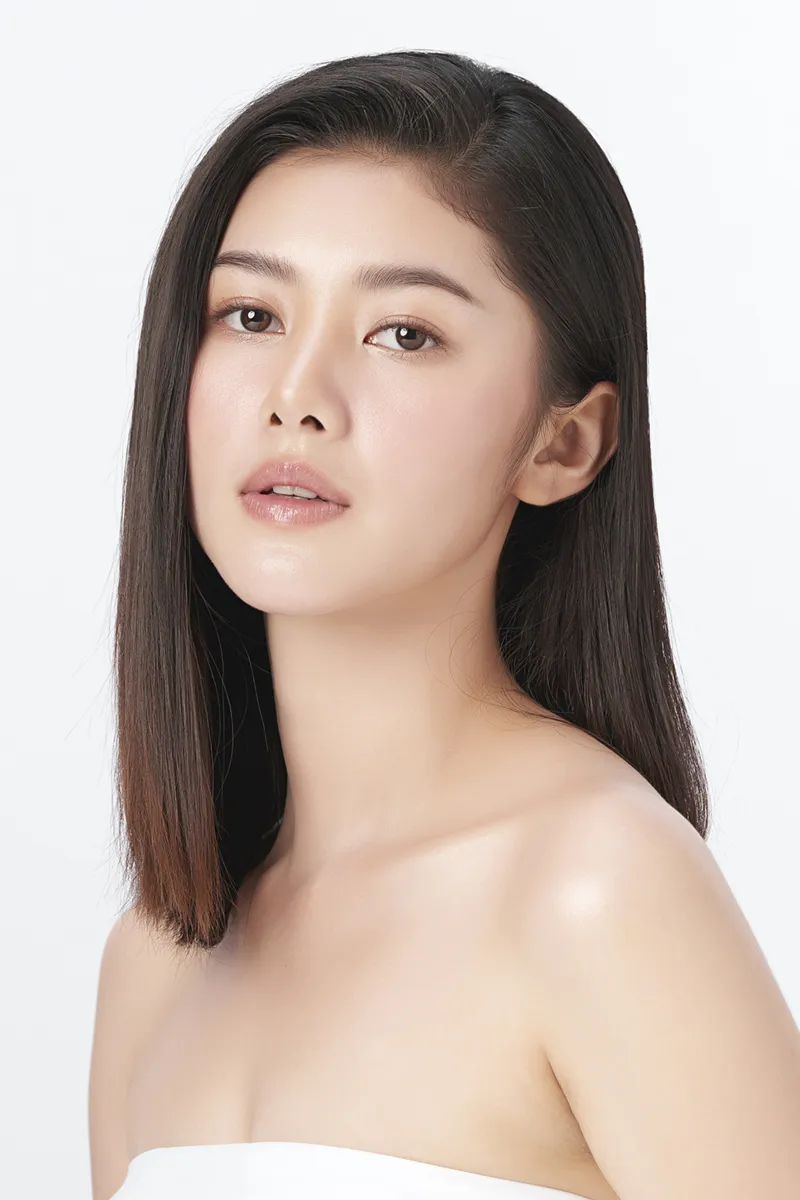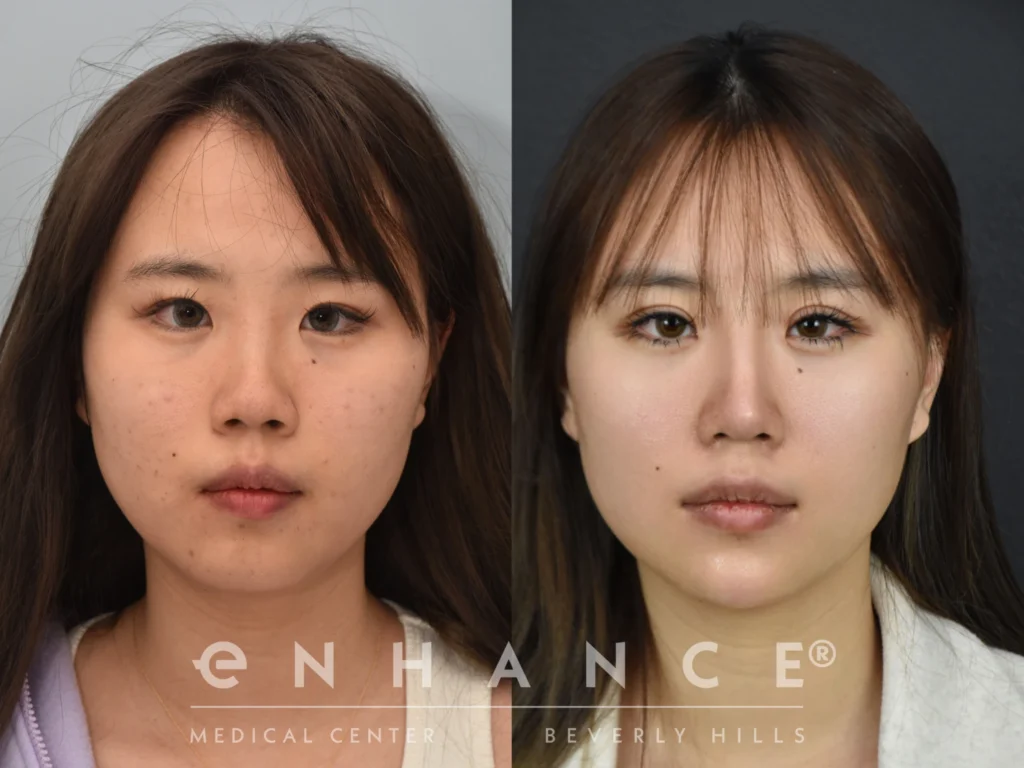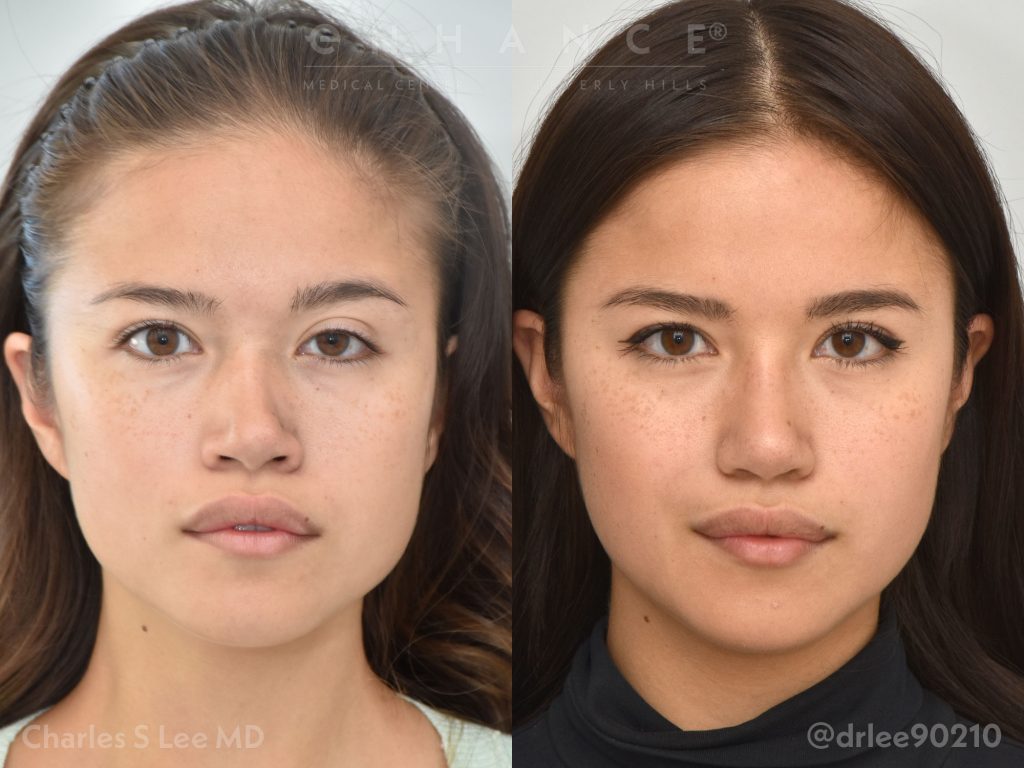Asian Eyelid Surgery in Beverly Hills
Overview
The anatomy of the Asian eyelid is quite different from that of people of non-Asian descent. Non-Asian eyelids almost always have a natural fold near the lower portion of the upper lid, known as a “double fold.” However, while some people of Asian descent may have double-fold lids, about 50 percent of the Asian population lacks the natural fold just above the lashes in the upper eyelid, creating a “single fold” upper eyelid. Depending on the aesthetics of your face, this single-fold structure can prevent you from having the bright, defined eyes you desire.
Asian Eyelid Surgery (also called double eyelid surgery) addresses the unique needs of those with single folds to provide the facial appearance you want—enhancing your natural beauty while maintaining your ethnicity.
What are the benefits of double eyelid surgery?
No Longer Looking Tired or Sleepy
The eyelid may not open if the muscle weakens or becomes disconnected from the eyelid cartilage (the “tarsus”). This condition, called ptosis (“drooping”), can either result from aging or genetics and is routinely addressed during eyelid crease surgery by reattaching the muscle more firmly to the tarsus. The result is a brighter, more alert appearance.
No Longer Looking Tired or Sleepy
The eyelid may not open if the muscle weakens or becomes disconnected from the eyelid cartilage (the “tarsus”). This condition, called ptosis (“drooping”), can either result from aging or genetics and is routinely addressed during eyelid crease surgery by reattaching the muscle more firmly to the tarsus. The result is a brighter, more alert appearance.
Eyelashes That Point Up Instead of Down
Many people (up to 50 percent) of all ethnicities have a common condition called ptosis, in which the eyelid muscle does not fully open the eyelid. One of the signs of ptosis is downward-pointing eyelashes. During eyelid surgery, the ptosis is corrected, and the eyelid crease is set, helping to get the lashes pointing outward in the correct orientation.
Enhancing Your Appearance While Maintaining Your Unique Ethnicity
It’s essential to maintain your ethnicity when performing any cosmetic surgery. Regarding eyelid surgery, there are some essential differences between Asian and non-Asian eyelid folds. The Asian upper eyelid crease begins close to the eyelashes and gets larger until the midpoint of the pupil; after this point, the crease runs parallel to the eye. The non-Asian upper eyelid crease runs parallel to the lid margin and is 20 percent larger than the Asian eyelid crease. A thorough understanding of these ethnic differences helps Dr. Lee produce natural-looking results for his Asian Eyelid Surgery patients.
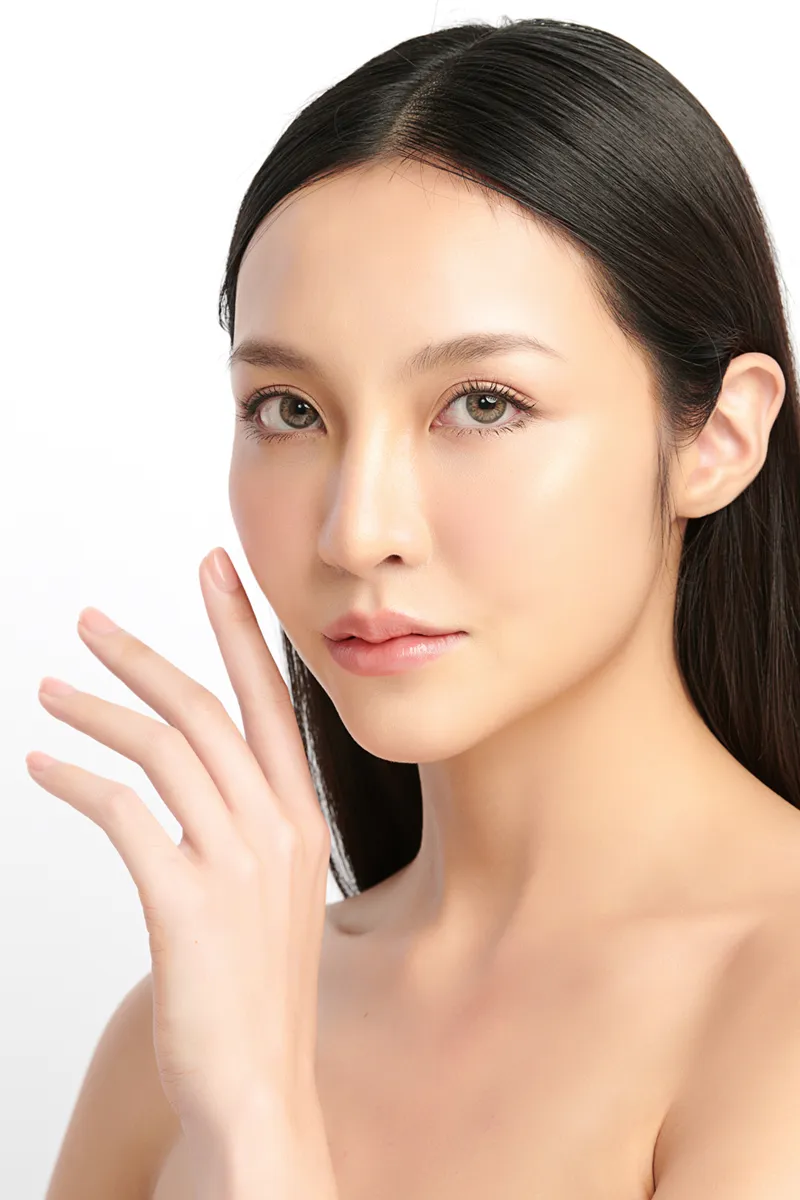
How Is Asian Eyelid Surgery Performed?
Depending on your needs and desired results, Dr. Lee will use one of two double eyelid surgery techniques for your procedure.
Non-incisional Eyelid Surgery (DST – Double Sutures and Twisting)
This procedure relies on weaving a fine thread on the undersurface of the eyelid to have it crease at the desired location. Typically, the procedure works best on patients under age 25 who need no skin removed, have thin skin and little fat, and desire a crease on the smaller end of the spectrum. It also works best if both eyes are symmetrical and have little ptosis (muscle weakness). While minor lid asymmetries and ptosis can be corrected, the results are less precise than an incision technique. It does not work well if you have had prior surgery, whether an incision surgery or multiple prior suture surgeries. The average longevity of this procedure is approximately seven years, in Dr. Lee’s experience. The advantages of this procedure are its short downtime, potential reversibility, and natural look.
Anchor Incisional Eyelid Surgery
This class of procedures gives the most flexibility to size, shape, and precision. It can correct varying degrees of asymmetry and muscle dysfunction (ptosis). The drawbacks are the slightly longer recovery period and the importance of finding an experienced surgeon due to the long learning curve in getting a natural-looking result. Scarring is usually minor in non-smokers and patients who do not have healing issues. (Due to its thin nature, generally, the eyelid skin heals very well, even if other body parts scar easily.)
In some cases, you may need more correction, in which case, Dr. Lee may need to perform an inner epi or eye enlargement procedure.
Inner Epi (Removal of a Mongolian Fold)
An inner epi or medial epicanthoplasty is performed if excessive skin at the inner corner of the eye interferes with a smooth crease formation. A newer technique called the redraping method makes incisions along the borders of the Mongolian fold and leaves minimal visible scarring.
Eye Enlargement by Cutting Outer Corners
This works best on patients with eyes that slant upward excessively. The attachment to the outer eye socket is lowered to a more horizontal position, effectively widening the eye. It is less preferable to drop a horizontal eye to a downward-slanting eye, which increases the visibility of the whites of the eye but can create an artificial, operated-on look.
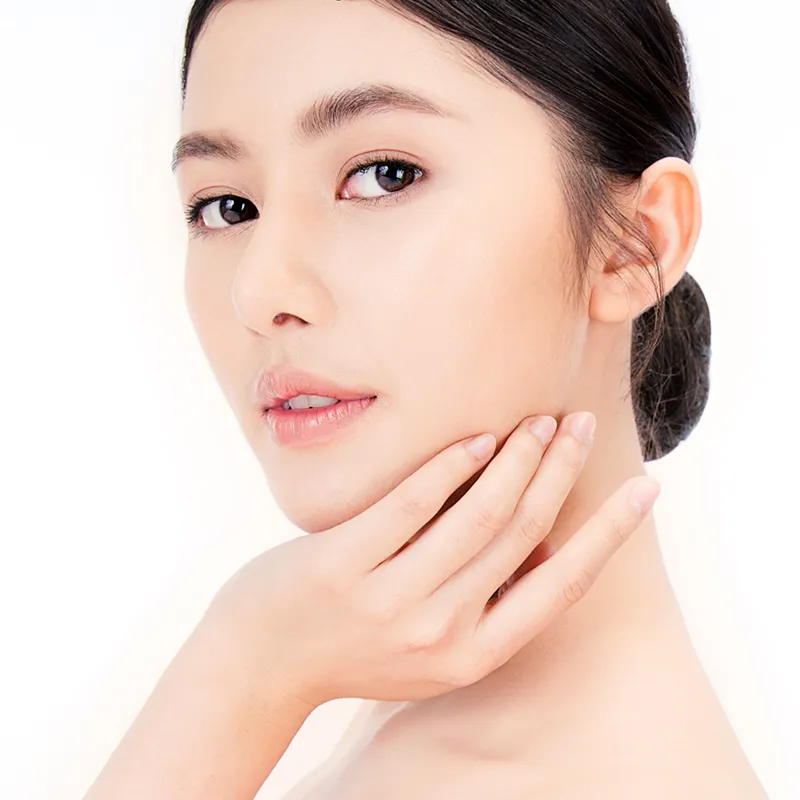
Asian Eyelid Surgery Concerns
Pitfalls
Due to the wide variation of eyelid anatomy, the Asian eyelid procedure has a long learning curve for the surgeon. It helps to have a surgeon trained appropriately, preferably by a world expert, as Dr. Charles S. Lee was, and then having the experience of treating thousands of patients
Risks
The chances of a poor outcome decrease with the skill and experience of the surgeon. Asymmetry or an unnatural look are the most common complications, but an experienced surgeon can point out whether your anatomy is more difficult than the typical patient’s. Patients with ptosis or protruding eyes are at higher risk for revision surgery. Certain patients have poor healing characteristics, especially those who bruise easily, smoke, or have very distensible joints.
Cost
The cost of Asian eyelid surgery with Dr. Charles Lee may vary depending on the patient’s needs and the selected surgical approach. A price quote will be provided during your consultation with Dr. Lee.
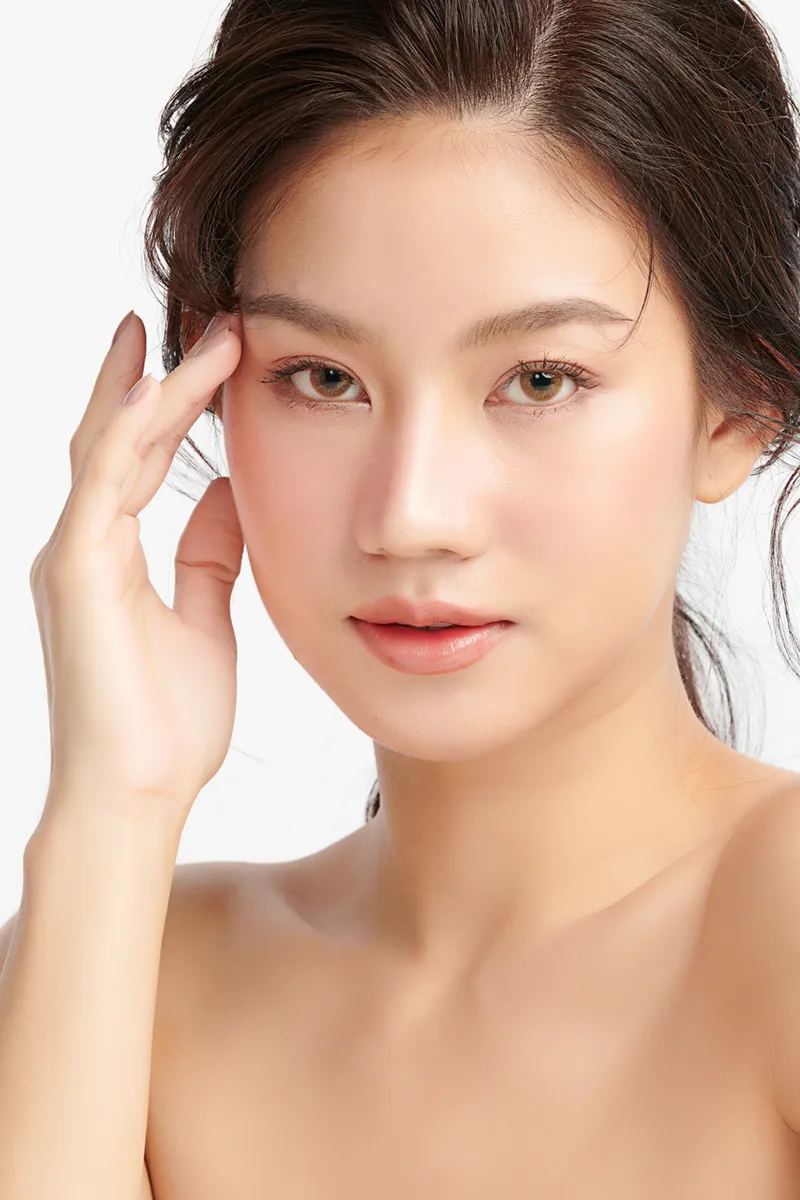
Asian Eyelid Surgery FAQ
What techniques are used in Asian Eyelid Surgery?
Asian Eyelid Surgery can be either incisional or non-incisional. Anchor blepharoplasty is an incisional method of creating a crease, giving the patient a double eyelid. To achieve this, the skin is cut, tissue is excised, and the skin is attached to a firm structure within the eyelid (tarsus, AKA tarsal plate). While many doctors simply attach the skin to the levator muscle, Dr. Lee prefers to additionally attach the skin to a deeper structure, the tarsal plate, along with the levator muscle. Whereas the levator muscle moves with the eyelid, the tarsal plate is static. Attaching the skin to both structures allows for greater precision when placing the crease and also reduces the possibility of fold failure. Medial epicanthoplasty, another incisional technique, is often used in conjunction to crease surgery to remove any excess inner fold skin (Mongolian fold) and allow the new eyelid crease to fold more smoothly.
The Double Suture and Twisting (DST) technique is a non-incisional method of creating a crease in the eyelid. Instead of being cut, the eyelid is simply stitched together. While the DST technique requires specific conditions in the patient to work to its full potential, it is an excellent technique for younger, qualified patients, as it is less invasive and involves less swelling and a shorter recovery than incisional techniques.
What are the limitations of DST suture-only surgery?
- Small crease height. No skin is removed, so the crease will be smaller and more mobile than an incision technique. There is less control over the final size and shape.
- Limited ptosis repair. If you have asymmetry of the eyes, and particularly if one eye is droopier than the other, there will be more limitation in how evenly the eyes can be matched up to each other. The resting tension of the eyelid-elevating muscle can be adjusted from the undersurface of the eyelid and incorporated into the DST procedure, but the correction is more difficult to control precisely, as can be done with an incision approach.
What is “fold failure” and why does it happen?
Double eyelid surgical methods can lead to fold failure for various reasons. Some incisional procedures fail because of limited dissection, while others fail because of the location where the skin/muscle is secured. For instance, the popular technique of securing the skin to the levator aponeurosis can lead to an imprecise crease and a higher rate of fold failure. This is why Dr. Lee additionally secures the skin to the tarsal plate and levator tendon when performing anchor blepharoplasty.
Similarly, traditional suture techniques often fail because the sutures are merely buried in the lid, creating the potential for the sutures to tear through the soft tissue of the upper eyelid. The DST technique resolves these issues by securing the skin/muscle to the tarsal plate to create a more permanent crease with a far lower risk of fold failure.
The two most common types of eye anatomy prone to fold failure are: 1. Deep-set eyes and 2. Patients with eyelid ptosis (weak eyelid muscle). Deep-set eyes strain the incision line and have a higher risk of breaking it. Patients with ptosis have incomplete opening of the eyelid so that the crease cannot form very firmly and is prone to breaking.
Does insurance cover double eyelid surgery?
If you wish to undergo Asian Eyelid Surgery for purely aesthetic reasons, it is highly unlikely that your insurance will cover the procedure. However, in some cases, corrective eyelid surgery can be covered by insurance. Patients with a condition known as ptosis have a drooping eyelid that interferes with vision, sometimes caused by a weakened levator muscle. Weakened levator muscles are often seen in younger patients with congenital ptosis. Other causes of a drooping eyelid is the dehiscence of the levator from the tarsus, which is the loosening or detachment of the eyelid muscle, and commonly occurs in older patients as part of the aging process. A visual field test can determine whether your ptosis is severe enough to have correction be covered by PPO health insurance.
Can BOTOX® Cosmetic help with excess forehead wrinkles and an angry look?
If the angry look is a by-product of having your upper visual field blocked, then you need to correct the eyelid surgically. BOTOX® Cosmetic will reduce the frown lines at the expense of dropping the brows and a return to a loss of your upper visual field.
My upper eye socket is hollow and my brows are very high. Why is this? Can I use fillers and BOTOX® Cosmetic for this?
Frequently, a retracted brow is caused by its attempt to help open a weak upper eyelid. This also creates an upper eyelid socket hollow. Correction requires adjusting the upper eyelid muscle tension and then repositioning the eye fat which, has been sucked up under the eye socket. BOTOX® Cosmetic will have the unwanted effect of drooping the eyelid; fillers will create a similar problem by making the upper eyelid heavier and burdening the already-weak eye muscle.
What types of eye anatomy are more difficult to operate on and at higher risk of a poor outcome?
Eyes that bulge forward are at risk for creasing at the wrong location. Similarly, patients with ptosis requiring correction at the time of crease surgery are also at risk for this. In these instances, there is not much clearance between the elevating muscle and the overlying skin. Therefore, the muscle can “catch” the upper lid skin as it is opening. For these reasons, very little fat should be removed for patients with at-risk anatomy. In some cases, fat grafting to the upper lid is necessary to create more distance between the skin and the moving muscle.
What is ptosis?
This is a droopy eyelid. The cause of this is related to either a weak eyelid muscle (which you are born with) or a detachment of the muscle from the tarsus (the cartilage skeleton of the lid margin), usually associated with aging. Ptosis, in Dr. Lee’s opinion, is more common in Asians, affecting as many as half the patients undergoing Asian Eyelid Surgery. Depending on the cause, the muscle needs to be reattached (if detached), or it needs to be strengthened/shortened so that the eyelid is in the proper position at rest.
Will I end up sleeping with my eyes open?
This is not likely to happen unless you have ptosis requiring significant shortening of your eyelid muscle. In many such cases of ptosis repair, the eyes will be able to close over time.
Is Asian Eyelid Surgery painful?
Pain is minimized during the procedure by placing you under IV anesthesia, which makes you sleepy and comfortable. Post-operatively, the minimal pain is controlled with simple TYLENOL®.
What other risks are associated with Asian Eyelid Surgery?
The chances of a poor outcome decrease with the skill and experience of the surgeon. Asymmetry or an unnatural look are the most common complications, but an experienced surgeon can point out whether your anatomy is more difficult than the typical patient’s. Patients with ptosis or protruding eyes are at higher risk for revision surgery. Certain patients have poor healing characteristics, especially those who bruise easily, smoke, or have very distensible joints.
What scars should I expect from Asian Eyelid Surgery?
If Dr. Lee uses the non-incisional method, you will not have scars after your double eyelid surgery. The incisional method does leave scars, but they are very small and hidden in the natural creases of your eyelids. Incision scars may appear pink or noticeable initially but will fade quickly as they continue to heal.
